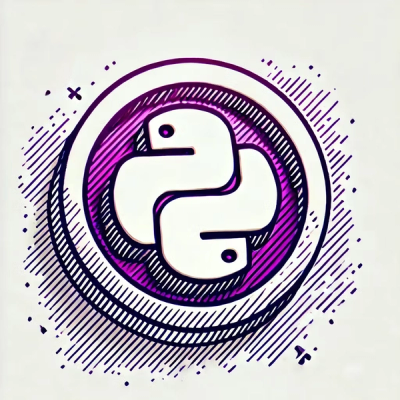
Research
PyPI Package Disguised as Instagram Growth Tool Harvests User Credentials
A deceptive PyPI package posing as an Instagram growth tool collects user credentials and sends them to third-party bot services.
.. image:: https://img.shields.io/pypi/v/grimp.svg :target: https://pypi.org/project/grimp
.. image:: https://img.shields.io/pypi/pyversions/grimp.svg :alt: Python versions :target: https://pypi.org/project/grimp/
.. image:: https://github.com/seddonym/grimp/workflows/CI/badge.svg?branch=master :target: https://github.com/seddonym/grimp/actions?workflow=CI :alt: CI Status
Builds a queryable graph of the imports within one or more Python packages.
Install grimp::
pip install grimp
Install the Python package you wish to analyse::
pip install somepackage
In Python, build the import graph for the package::
>>> import grimp
>>> graph = grimp.build_graph('somepackage')
You may now use the graph object to analyse the package. Some examples::
>>> graph.find_children('somepackage.foo')
{
'somepackage.foo.one',
'somepackage.foo.two',
}
>>> graph.find_descendants('somepackage.foo')
{
'somepackage.foo.one',
'somepackage.foo.two',
'somepackage.foo.two.blue',
'somepackage.foo.two.green',
}
>>> graph.find_modules_directly_imported_by('somepackage.foo')
{
'somepackage.bar.one',
}
>>> graph.find_upstream_modules('somepackage.foo')
{
'somepackage.bar.one',
'somepackage.baz',
'somepackage.foobar',
}
>>> graph.find_shortest_chain(importer='somepackage.foobar', imported='somepackage.foo')
(
'somepackage.foobar',
'somepackage.baz',
'somepackage.foo',
)
>>> graph.get_import_details(importer='somepackage.foobar', imported='somepackage.baz'))
[
{
'importer': 'somepackage.foobar',
'imported': 'somepackage.baz',
'line_number': 5,
'line_contents': 'from . import baz',
},
]
By default, external dependencies will not be included. This can be overridden like so::
>>> graph = grimp.build_graph('somepackage', include_external_packages=True)
>>> graph.find_modules_directly_imported_by('somepackage.foo')
{
'somepackage.bar.one',
'os',
'decimal',
'sqlalchemy',
}
You may analyse multiple root packages. To do this, pass each package name as a positional argument::
>>> graph = grimp.build_graph('somepackage', 'anotherpackage')
>>> graph.find_modules_directly_imported_by('somepackage.foo')
{
'somepackage.bar.one',
'anotherpackage.baz',
}
Graphs can also be built from portions_ of namespace packages_. To do this, provide the portion name, rather than the namespace name::
>>> graph = grimp.build_graph('somenamespace.foo')
What's a namespace package? ###########################
Namespace packages are a Python feature allows subpackages to be distributed independently, while still importable under a shared namespace. This is, for example, used by the Python client for Google's Cloud Logging API_. When installed, it is importable in Python as google.cloud.logging. The parent packages google and google.cloud are both namespace packages, while google.cloud.logging is known as the 'portion'. Other portions in the same namespace can be installed separately, for example google.cloud.secretmanager.
Grimp expects the package name passed to build_graph to be a portion, rather than a namespace package. So in the case of the example above, the graph should be built like so::
>>> graph = grimp.build_graph('google.cloud.logging')
If, instead, a namespace package is passed (e.g. grimp.build_graph('google.cloud')), Grimp will raise NamespacePackageEncountered.
.. _portions: https://docs.python.org/3/glossary.html#term-portion .. _namespace packages: https://docs.python.org/3/glossary.html#term-namespace-package .. _The Python client for Google's Cloud Logging API: https://pypi.org/project/google-cloud-logging/
FAQs
Builds a queryable graph of the imports within one or more Python packages.
We found that grimp demonstrated a healthy version release cadence and project activity because the last version was released less than a year ago. It has 1 open source maintainer collaborating on the project.
Did you know?

Socket for GitHub automatically highlights issues in each pull request and monitors the health of all your open source dependencies. Discover the contents of your packages and block harmful activity before you install or update your dependencies.

Research
A deceptive PyPI package posing as an Instagram growth tool collects user credentials and sends them to third-party bot services.

Product
Socket now supports pylock.toml, enabling secure, reproducible Python builds with advanced scanning and full alignment with PEP 751's new standard.

Security News
Research
Socket uncovered two npm packages that register hidden HTTP endpoints to delete all files on command.